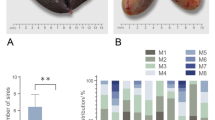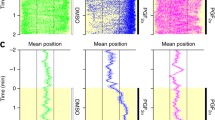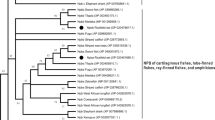Abstract
Our previous studies suggested that prostaglandin E2 (PGE2) is a putative sex pheromone in Chinese black sleeper Bostrichthys sinensis, a fish species that inhabits intertidal zones and mates and spawns inside a muddy burrow. We found immunoreactivities of PGE2 receptor subtypes (Ep1–3) expressed in the olfactory sac, but only Ep1 presented higher density of immunoreactivity in mature fish than that in immature fish in both sexes. To gain a better understanding of the underlying molecular mechanism for the detection of PGE2 in the olfactory system, we cloned an ep 1 cDNA from the adult olfactory sac. The open-reading frame of the ep 1 consisted of 1,134-bp nucleotides that encoded a 378-amino acid-long protein with a seven-transmembrane domain, typical for the G protein-coupled receptors superfamily. Expression of ep 1 mRNA was observed in all tissues examined, with higher levels obtained in the olfactory sacs and testes. The expression of ep 1 mRNA in the olfactory sacs and gonads was significantly higher in both sexes of mature fish than in those of immature ones. Taken together, our results suggested that Ep1, which is highly expressed in the olfactory sacs and gonads of mature fish, is important for the control of reproduction and may be involved in PGE2-initiated spawning behavior in B. sinensis.




Similar content being viewed by others
References
Belanger AJ, Arbuckle WJ, Corkum LD, Gammon DB, Li W, Scott AP, Zielinski BS (2004) Behavioral and electrophysiological responses by reproductive female Neogobius melanostomus to odours released by conspecific males. J Fish Biol 65:933–946. doi:10.1111/j.0022-1112.2004.00494.x
Biju KC, Singru PS, Schreibman MP, Subhedar N (2003) Reproduction phase-related expression of GnRH-like immunoreactivity in the olfactory receptor neurons, their projections to the olfactory bulb and in the nervus terminalis in the female Indian major carp Cirrhinus mrigala (Ham.). Gen Comp Endocrinol 133:358–367. doi:10.1016/S0016-6480(03)00190-4
Breer H (1994) Odor recognition and second messenger signaling in olfactory receptor neurons. Semin Cell Biol 5:25–32. doi:10.1006/scel.1994.1004
Breyer MD, Zhang Y, Guan YF, Hao CM, Hebert RL (1998) Regulation of renal function by prostaglandin E receptors. Kidney Int 54:S88–S94. doi:10.1046/j.1523-1755.1998.06718.x
Coleman RA, Grix SP, Head SA, Louttit JB, Mallett A, Sheldrick RL (1994) A novel inhibitory prostanoid receptor in piglet saphenous vein. Prostaglandins 47:151–168. doi:10.1016/0090-6980(94)90084-1
Creese I, Sibley DR (1981) Receptor adaptations to centrally acting drugs. Annu Rev Pharmaco Toxicol 21:357–391. doi:10.1146/annurev.pa.21.040181.002041
Dulka JG, Stacey NE, Sorensen PW, Van Der Kraak GJ (1987) A sex steroid pheromone synchronizes male-female spawning readiness in the goldfish. Nature 325:251–253. doi:10.1038/325251a0
Fedyk BR, Ripper JM, Brown DM, Phipps RP (1996) A molecular analysis of PGE receptor (EP) expression on normal and transformed B lymphocytes: coexpression of EP1, EP2, EP3β and EP4. Mol Immunol 33:33–45. doi:10.1016/0161-5890(95)00130-1
Fukuiri T, Takumida M, Nakashimo Y, Hirakawa K (2013) Expression of prostanoid receptors (EP1, 2, 3, and 4) in normal and methimazole-treated mouse olfactory epithelium. Acta Otolaryngol 133:70–76. doi:10.3109/00016489.2012.712214
Habibi HR, de Leeuw R, Nahorniak CS, Th Goos HJ, Peter RE (1989) Pituitary gonadotropin-releasing hormone (GnRH) receptor activity in goldfish and catfish: seasonal and gonadal effects. Fish Physiol Biochem 7:109–118. doi:10.1007/BF00004696
Hoegg S, Brinkmann H, Taylor JS, Meyer A (2004) Phylogenetic timing of the fish-specific genome duplication correlates with the diversification of teleost fish. J Mol Evol 59:190–203. doi:10.1007/s00239-004-2613-z
Hong WS, Zhao WH, Ma XL, Guo XF, Zhang QY, Chai MJ, Zheng WY (2004) A preliminary study on the induction of spawning by sex pheromones in Bostrichthys sinensis. J Fisheries China 28:225–230. doi:10.3321/j.issn:1000-0615.2004.03.001 (in Chinese with English abstract)
Hong WS, Chen SX, Zhang QY, Zheng WY (2006) Sex organ extracts and artificial hormonal compounds as sex pheromones to attract broodfish and to induce spawning of Chinese black sleeper (Bostrichthys sinensis Lacepede). Aquacul Res 37:529–534. doi:10.1111/j.1365-2109.2006.01462.x
Irvine IAS, Sorensen PW (1993) A cute olfactory sensitivity of wild common carp, Cyprinus Carpio, to goldfish hormonal sex pheromones is influenced by gonadal maturity. Can J Zool 71:2199–2210. doi:10.1139/z93-309
Kwok A, Wang Y, Leung F (2012) Molecular characterization of prostaglandin F receptor (FP) and E receptor subtype 1 (EP1) in zebrafish. Gen Comp Endocrinol 178:216–226. doi:10.1016/j.ygcen.2012.05.002
Lai XJ, Hong WS (2010) Variation with reproductive status of PGE2 receptor immunoreactivities in the Bostrichthys sinensis olfactory system. J Fish Biol 77:1542–1551. doi:10.1111/j.1095-8649.2010.02791.x
Li W, Scott AP, Siefkes MJ, Yan H, Liu Q, Yun S, Gage D (2002) Bile acid secreted by male sea lamprey that acts as a sex pheromone. Science 296:138–141. doi:10.1126/science.1067797
Ma XL, Hong WS, Chai MJ, Pan LA, Huang HY, Zhang QY (2003) Comparisons of EOG to sex pheromones in Bostrichthys sinensis Lacepede. J Xiamen Univ (Natural Science) 42:781–786. doi:10.3321/j.issn:0438-0479.2003.06.022 (in Chinese with English abstract)
Matsuoka Y, Furuyashiki T, Yamada K, Nagai T, Bito H, Tanaka Y, Kitaoka S, Ushikubi F, Nabeshima T, Narumiya S (2005) Prostaglandin E receptor EP1 controls impulsive behavior under stress. Proc Natl Acad Sci USA 102:16066–16071. doi:10.1073/pnas.0504908102
Mizuguchi S, Ohno T, Hattori Y, Ae T, Minamino T, Satoh T, Arai K, Saeki T, Hayashi I, Sugimoto Y, Narumiya S, Saigenji K, Majima M (2010) Roles of prostaglandin E2-EP1 receptor signaling in regulation of gastric motor activity and emptying. Am J Physiol Gastrointest Liver Physiol 299:G1078–G1086. doi:10.1152/ajpgi.00524.2009
Moore A, Waring CP (1995) Seasonal changes in olfactory sensitivity of mature male Atlantic salmon (Salmo salar L.) parr to prostaglandins. In: Goetz FW, Thomas P (eds) Proceedings of the 5th international symposium on reproductive physiology of fish. Fish Symp, Austin, 1995, pp 273
Moore A, Waring CP (1996) Electrophysiological and endocrinological evidence that F-series prostaglandins function as priming pheromones in mature male Atlantic salmon (Salmo salar parr). J Exp Biol 199:2307–2316. doi:10.1016/S0008-6223(98)00300-5
Moriyama T, Higashi T, Togashi K, Iida T, Segi E, Sugimoto Y, Tominaga T, Narumiya S, Tominaga M (2005) Sensitization of TRPV1 by EP1 and IP reveals peripheral nociceptive mechanism of prostaglandins. Mol Pain 1: 3. doi:10.1186/1744-8069-1-3
Morrison TB, Weis JJ, Wittwer CT (1998) Quantification of low-copy transcripts by continuous SYBR Green I monitoring during amplification. Biotechniques 24:954–962
Narumiya S, Sugimoto Y, Ushikubi F (1999) Prostanoids receptors structures, properties, and functions. Physiol Rev 79:1193–1226
North TE, Goessling W, Walkley CR, Lengerke C, Kopani KR, Lord AM, Weber GJ, Bowman TV, Jang IH, Grosser T, Fitzgerald GA, Daley GQ, Orkin SH, Zon LI (2007) Prostaglandin E2 regulates vertebrate haematopoietic stem cell homeostasis. Nature 447(7147):1007–1011. doi:10.1038/nature05883
Oida H, Namba T, Sugimoto Y, Ushikubi F, Ohishi H, Ichikawa A, Narumiya S (1995) In situ hybridization studies of prostacyclin receptor mRNA expression in various mouse organs. Br J Pharmacol 116:2828–2837. doi:10.1111/j.1476-5381.1995.tb15933.x
Phipps RP, Stein SH, Roper RL (1991) A new view of prostaglandin E regulation of the immune response. Immunol Today 12:349–352. doi:10.1016/0167-5699(91)90064-Z
Saitou N, Nei M (1987) The neighbor-joining method: a new method for reconstructing phylogenetic trees. Mol Biol Evol 4:406–425
Smith WL, Langenbach R (2001) Why there are two cyclooxygenase isozymes. J Clin Invest 107(12):1491–1495. doi:10.1172/JCI13271
Sorensen PW, Hara TJ, Stacey NE, Goetz FW (1988) F prostaglandins function as potent olfactory stimulants that comprise the postovulatory female sex pheromone in goldfish. Biol Reprod 39:1039–1050. doi:10.1095/biolreprod39.5.1039
Sveinsson T, Hara TJ (2000) Olfactory sensitivity and specificity of Arctic char, Salvelinus alpinus, to a putative male pheromone, prostaglandin F2α. Physiol Behav 69:301–307. doi:10.1016/S0031-9384(99)00253-X
Watabe A, Sugaimoto Y, Honda A, Irie A, Namba T, Negishi M, Ito S, Narumiya S, Ichikawa A (1993) Cloning and expression of cDNA for a mouse EP1 subtype of prostaglandin E receptor. J Biol Chem 268:20175–20178
Wittbrodt J, Meyer A, Schartl M (1998) More genes in fish? BioEssays 20:511–515
Wyatt TD (2003) Pheromones and animal behaviour: communication by smell and taste. Cambridge University Press, Cambridge
Yambe H, Kitamura S, Kamio M, Yamada M, Matsunaga S, Fusetani N, Yamazaki F (2006) L-Kynurenine, an amino acid identified as a sex pheromone in the urine of ovulated female masu salmon. Proc Natl Acad Sci USA 103:15370–15374. doi:10.1073/pnas.0604340103
Yoshida Y, Matsumura H, Nakajima T, Mandai M, Urakami T, Kuroda K, Yoneda H (2000) Prostaglandin E (EP) receptor subtypes and sleep: promotion by EP4 and inhibition by EP1/EP2. NeuroReport 11:2127–2131
Zhao H, Ivic L, Otaki JM, Hashimoto M, Mikoshiba K, Firestein S (1998) Functional expression of a mammalian odorant receptor. Science 279:237–242. doi:10.1126/science.279.5348.237
Acknowledgments
This work was supported by the National Natural Science Foundation of China (No. 41276129, 40776080), the fund for Doctor Station of the Ministry of China (No. 20120121110029) and the Major Project of Agricultural Science and Technology of Fujian Province (2012N5011). Professors J. Hodgkiss and Y. Zhu are thanked for their help with English language of the manuscript.
Author information
Authors and Affiliations
Corresponding author
Electronic supplementary material
Below is the link to the electronic supplementary material.
Rights and permissions
About this article
Cite this article
Lai, X.J., Hong, W.S., Liu, F. et al. Cloning and expression of prostaglandin E2 receptor subtype 1 (ep 1 ) in Bostrichthys sinensis . Fish Physiol Biochem 40, 1281–1288 (2014). https://doi.org/10.1007/s10695-014-9923-x
Received:
Accepted:
Published:
Issue Date:
DOI: https://doi.org/10.1007/s10695-014-9923-x




